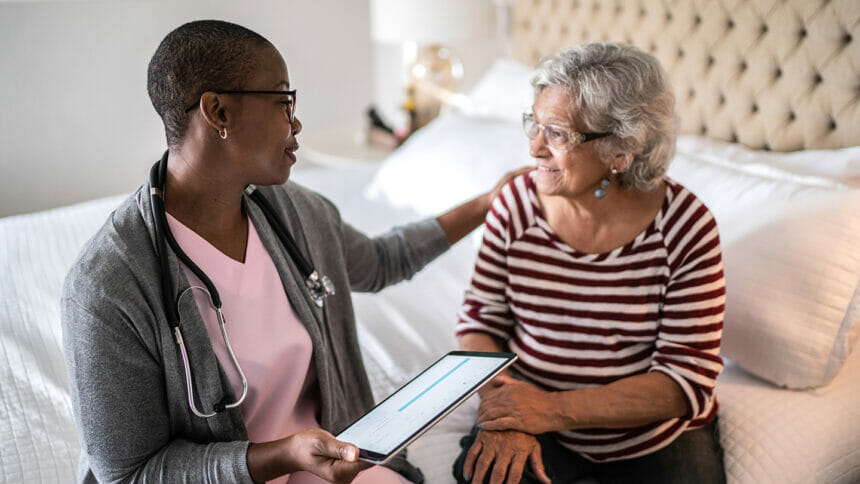
The fate of the temporarily expanded hospital-at-home waiver remains unclear as providers ask how they will offer in-home acute care without a permanent payment system in place and other key program questions.
Acute Hospital Care at Home, a nonpermanent waiver implemented as a result of hospital overcrowding during the COVID-19 pandemic, granted healthcare providers the ability to provide hospital-level acute care to patients in their homes. The waiver received an extension through 2024, and as the deadline approaches, providers are exploring issues of payment, standard of care and how to count the virtual hospital beds, according to a report from InsideHealthPolicy.
“Here we are with just about 18 months or less to go. And so we’re trying desperately to continue those conversations with state and federal supporters,” said Colleen Hole, vice president of clinical integration and chief nurse executive at hospital-at-home provider Atrium, in the report. “Honestly, I don’t know what’s going to happen. I don’t think anybody does.”
Providers must prove the merits of the hospital-at-home waiver, as well as develop quality measures and other standards to get the Centers for Medicare & Medicaid Services to make the rule permanent, according to the report. At the same time, requirements such as certificates of need and hospital bed licenses vary from state to state, and make it challenging to develop a single set of standards for a uniform hospital-at-home program.
New hospital-at-home partnership
Still, there continues to be an appetite for hospitals to provide in-home acute care. A partnership announced Friday between home care company Resilient Healthcare and Community Hospital Consulting aims to extend hospital-at-home offerings to residents of 40 states. The companies are putting a particular emphasis on residents of rural areas, who disproportionately experience limited access to healthcare.
“It used to be that if they were sick enough to be in the hospital, then you would be admitted to the hospital,” said Jackleen Samuel, founder and CEO of Resilient, in a statement. “That dynamic is changing. Now, if they are stable, we can deliver great care to them in the home.
Hospital-at-home is expected to continue to grow. The hospital waiver has expanded to 125 health systems and 289 hospitals in 37 states in three years. And more than three quarters of health system leaders hope to build hospital-at-home capabilities within the next five years, according to Kuldeep Rajput, CEO of remote patient monitoring and telehealth technology firm Biofourmis. Only 13% shared the same intent last year. Rajput also noted that a permanent hospital-at-home solution is likely on the horizon, which could drive more providers to enter the space.
“Another trend impacting hospital-at-home adoption is the health inequities that continue to widen across the U.S. and other countries and the urgent need to address them,” Rajput said. “Care-at-home can be a bridge to the urban and rural communities that have been underserved by the industry to date.”

